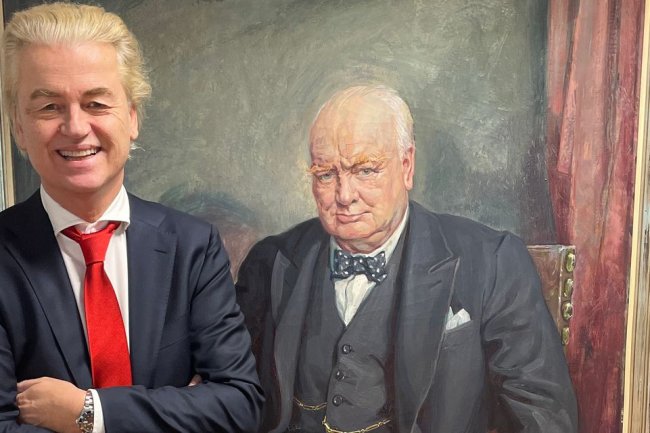Gary Gensler’s Money-Market Gamble
The SEC’s third try at fund reform creates new financial risks. By The Editorial Board July 30, 2023 4:32 pm ET Securities and Exchange Commission Chair Gary Gensler Photo: Al Drago/Bloomberg News Regulators rarely admit mistakes, but lo and behold, the Securities and Exchange Commission did this month when it scrapped two money-market rules. Alas, Chair Gary Gensler’s rewrite could cause more strain on short-term funding markets when financial trouble arrives. The SEC is attempting for the third time since the 2008 financial panic to write regulations to prevent runs on prime money-market funds. These funds inv


Securities and Exchange Commission Chair Gary Gensler
Photo: Al Drago/Bloomberg News
Regulators rarely admit mistakes, but lo and behold, the Securities and Exchange Commission did this month when it scrapped two money-market rules. Alas, Chair Gary Gensler’s rewrite could cause more strain on short-term funding markets when financial trouble arrives.
The SEC is attempting for the third time since the 2008 financial panic to write regulations to prevent runs on prime money-market funds. These funds invest in high-quality commercial paper and short-term government securities. They are supposed to hold a stable value, and investors can redeem their shares at any time.
Large companies and institutional investors use these funds to manage cash flow, and they typically offer higher yields than funds solely invested in government securities. They also provide a source of liquidity for big banks and businesses. But they are also vulnerable to runs when markets come under stress.
The collapse of Lehman Brothers in 2008 triggered a run on the Reserve Primary Fund, which lost its $1 a share peg. Investors in other funds panicked, and short-term credit markets froze. Treasury and the Federal Reserve swooped in with a government guarantee.
The SEC in 2010 issued rules prescribing duration, credit quality and liquidity requirements for fund holdings. Four years later, the SEC required that prime funds with institutional investors report a floating net asset value rather than a stable $1 a share price, which had given investors a false sense of security. We supported this rule.
However, the SEC at the same time adopted two other rules that allowed fund managers to suspend redemptions and impose withdrawal fees when their liquidity dropped below a certain threshold. The goal was to halt panics. But as we warned, the rules would give investors an incentive to withdraw their money at the first sign of market stress.
And what do you know? That’s what happened in March 2020. Amid the pandemic uncertainty, fund managers sought to maintain liquidity above the SEC threshold by selling longer-dated securities at a loss. These fire-sales caused short-term credit markets to seize up again and prompted another government intervention. The SEC is now scrapping its 2014 rules that allowed funds to suspend and impose fees on redemptions.
Yet Mr. Gensler’s mulligan could fuel more turmoil the next time financial markets come under stress. The new rule increases the minimum share of a fund’s assets that managers must be able to liquidate in a business day to 25% from 10% and in a week to 50% from 30%. Managers of institutional prime funds would also be required to impose a fee on withdrawing investors when their daily redemptions exceed 5% of fund assets.
Even the SEC acknowledges these rules may boomerang. Fees on redemptions and higher liquidity requirements “may reduce the yields they are able to offer to investors” and “may result in a greater reallocation of capital from prime to government funds, bank deposit accounts, and other types of liquid vehicles,” the 424-page rule-making notes.
The SEC also warns that compliance costs may “be passed along to fund investors in the form of higher expense ratios or reduced availability of certain fund offerings.” These costs could “contribute to consolidation” in the fund industry and fewer options for commercial paper issuers and investors.
***
Altogether, the new rules “may reduce the viability of prime money market funds as an asset class,” the SEC concedes. However, it says the reallocation of cash to insured bank products and government money-market funds “may be efficient.” Driving more investors into government funds may help support the Treasury market during the Fed’s quantitative tightening. But the rules could also make markets overall less resilient. “Is one of our goals to kill prime funds?” GOP Commissioner Hester Peirce mused in a dissent.
“Today’s adoption contains the same flaw that tanked the 2014 money market fund rulemaking—an insistence that our own judgment is superior to that of money market funds, their sponsors, their boards, and their shareholders,” she writes. “A better approach would be to permit funds to choose approaches that work for them.
Such one-size-fits-all regulation often creates systemic financial vulnerabilities that become apparent only when markets are in distress. We may find out if Mr. Gensler is smarter than markets only when it’s too late.
What's Your Reaction?






















